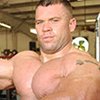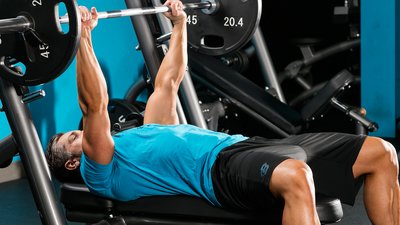I've had the privilege of training many of the world's top strength athletes. You might be surprised to hear many of them are over 40 years old. Two of my former training partners also did world-class feats of strength into their 50s: George Brink became the first person over 50 to deadlift more than 800 pounds (804, to be exact), and Odd Haugen was still winning professional Strongman contests at 55.
So much for that nonsense about the human body heading downhill after age 40.
Based on my experiences with these amazing athletes, I'm going to share with you five training strategies that can help you continue gaining strength well into your golden years. But you must first adjust your mindset to one that accepts that your greatest physical feats still lie before you.
While you may not aspire to push your body to the level of an elite athlete, that doesn't mean it's time to hang up your training belt.
So let's take a closer look at how to keep those gains coming!
1. Master Proper Exercise Form
Any technical breakdown in form diminishes the focus on the target muscle group. When your exercise execution suffers, not only does the chance of injury increase, but you're now practicing the wrong thing every time you do the lift. Repeating bad form engraves the wrong movement pattern, taking you further away from your objectives.
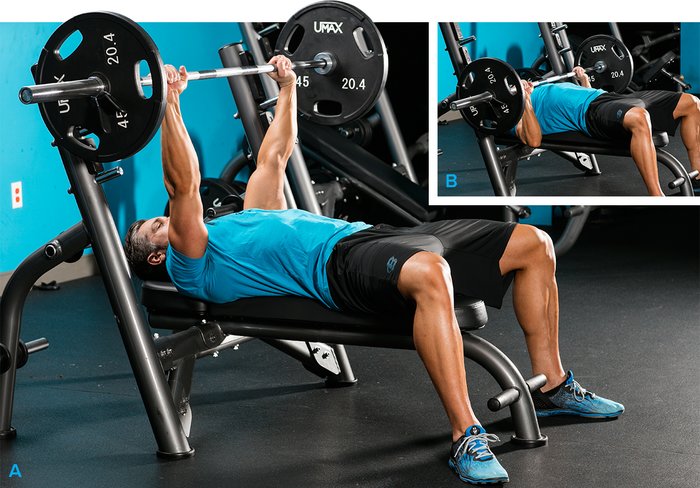
Barbell Bench Press
Strength is a skill. To develop that skill, you need to do it over and over with perfect form. If you're over 40 and training for strength, you never want your form to break down on a set. Training for strength first and foremost requires mastering the movement.
Over-40 Tip: Performing the correct movement pattern consistently is essential. Always err on the side of stopping short of technical failure; when you start to lose form because of fatigue, end the set. Live to fight another day!
2. Avoid Single-Joint Movements Using Ultra-Heavy Weight
Your elbows, shoulders, and knees are more vulnerable to injury after age 40. Years of wear and tear on the cartilage surrounding the joints takes its toll. Single-joint movements hit those joints most directly, because the weight isn't spread across multiple joints, which could be problematic if you're going too heavy.
I'm not telling you mature lifters to avoid all isolation exercises; I'm just recommending that you keep your form strict on isolation movements while using a weight that's only moderately heavy. Avoid cheat curls, skullcrusher personal records, and swinging lateral raises. Also avoid frequent PR attempts, especially on isolation movements; let your strength-measuring sticks be big compound movements like squats, presses, and pulls.
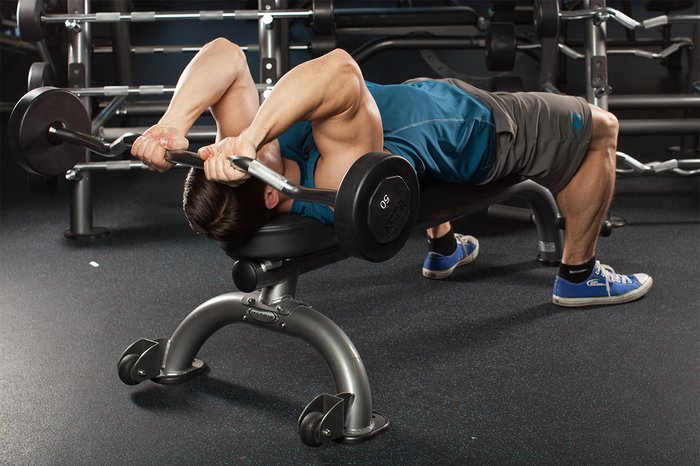
When working with my older lifters, I often include a 4- to 5-second eccentric (negative) to help them develop a mind-muscle connection. Single-joint movements are not about moving a weight from point A to point B as fast as possible; they're about working a specific muscle most effectively.
Over-40 Tip: Track your training sessions. As you age, your body takes longer to recover, so you may find you need to back off on your training frequency a bit. Also, tracking your training sessions will help you identify which single-joint movements best aid your multijoint exercises. Taking careful notes can also help you identify which exercises may be contributing to joint pain.
3. Warm Up Properly—Or Else
Warming up should never be overlooked by any athlete, but for the over-40 lifter, the consequences are even more significant. A loss in range of motion or flexibility, for example, can increase your risk for muscle sprains or strains. A proper warm-up improves your physical capabilities, places you in the right mindset, and lowers your risk of injury.
Cardio-based warm-ups are a great start, but it's also important to do warm-up sets of the movement you will be training.

Back Squat
Let's say you're squatting, and your first working set calls for 225 pounds. Instead of spending 20 minutes on the elliptical and starting right at 225, do just a couple minutes on the elliptical and follow a warm-up progression something like this:
- Set 1: 6 reps with the Olympic bar (45 pounds)
- Set 2: 6 reps with 45 pounds
- Set 3: 5 reps with 135 pounds
- Set 4: 3 reps with 135 pounds
- Set 5: 1 reps with 185 pounds
Warming up like this helps you in several ways. You get more practice building the skill of the movement. Your training volume increases. Your mind is dialed in. You achieve all of this without inducing greater fatigue. Notice that you aren't coming anywhere close to muscle failure by doing multiple reps with the heavier weights.
Over-40 Tip: If you need an even more extensive warm-up, try this: Do a 5- to 10-minute general warm-up on your favorite piece of cardio equipment, or just take a brisk walk, then perform dynamic stretches. This dynamic-stretching routine shouldn't take longer than 2 minutes. Then, go into a progressively heavier warm-up of the first movement you're doing, like the one listed above.
4. Increase the Frequency of Your "Deload" Phase
Newsflash: After hitting the big 4-0, you are no longer invincible. Actually, you never were. But you're even more aware of it now.
To gain strength, you can't always be going full tilt in the gym like you could in your 20s. Increasingly, you need "down" weeks or workouts. This isn't accomplished by just lying around, however; rather, it's active-recovery training, aka deloading.
Think of three weeks of intense training followed by a lighter week with less volume. A good starting point during deload weeks is to use about 70 percent of your previous total training volume, and gauge it from there. Total training volume is the sum of all the sets you do of an exercise multiplied by reps multiplied by weight. Cutting back 30 percent can include adjusting some or all of those variables downward. Some lifters may need to deload more often, maybe every third week; others can go longer. Your own frequency of deloads depends on training intensity, volume, recuperative ability, injury history, and a host of other individual variables.
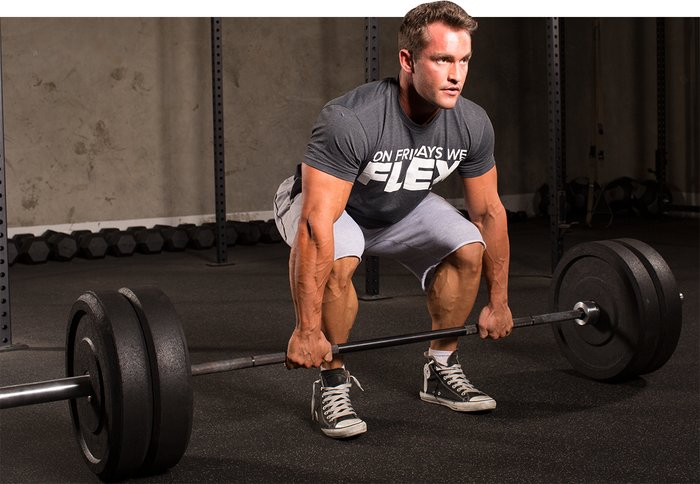
Your body wasn't designed to go all-out 52 weeks a year; generally, the stronger you are, the more often you'll need to deload.
Don't use deload weeks as blow-off weeks; instead, use them as technical-reinforcement weeks! The weights are lighter, so this is a prime opportunity to perfect your form.
Over-40 Tip: Just because most of the world operates on a seven-day-a-week cycle doesn't mean your training schedule must. For example, if you bench pressed and squatted twice a week in your 30s, and doing the same thing now leaves you under-recovered, stretch out your week. Your training week can be 9-10 days instead of 7.
I use this strategy with one of my clients, Tom Deebel, who has officially deadlifted 640 pounds at 197 pounds. He's 52 years old.
5. Make More Time for Sleep
Recovery only increases in importance as an athlete ages. Thankfully, the social pressure to party all night has eased up—I hope!
Instead of staying up late watching "Saved by the Bell" reruns, do yourself a favor and get some sleep. When you sleep, you recover; and when you recover, you repair and rebuild, both of which are needed for optimal size and strength gains.

Shoot for a minimum of seven hours of sleep every night. Better yet, get 8-9.
Over-40 Tip: Create an optimal sleep environment. Sleep in a cool, dark room on a comfortable, supportive mattress. Avoid caffeine, alcohol, and intense exercise late the evening, and turn off anything that can stimulate you—like your TV or smartphone—well before bedtime.
Final Thoughts
In many sports, including bodybuilding, athletes over the age of 40 aren't just participating as master's competitors but actually challenging the best in the world. Strength competitors are no exception, nor are the individuals who just want to continue pushing themselves hard in the gym.
With these five tweaks in your training regimen, you can take your strength game to a new level after 40. Just don't expect to do it the same way you did 20 years ago!
